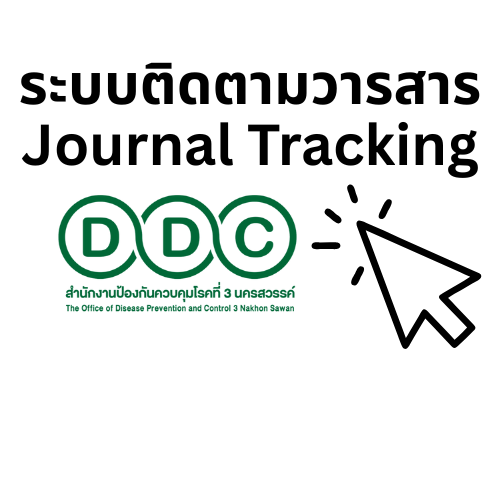Effect of Community-based Methadone Treatment on Reduced Withdrawal among Injecting Drug Users Enrolled in a Long-term Methadone Therapy Program in the highlands of Chiang Rai
Keywords:
Injection drug user, Methadone therapy, Community-based serviceAbstract
This research was to analyze the reduction of drug use among addicts enrolled in a methadone therapy program in a community-based treatment center in the highlands of Chiang Rai Province in northern Thailand. This research used quantitative and qualitative methods: Quantitative data were collected by personal interview using a structured question with all 74 persons enrolled in a community-based rehabilitation center (i.e., the entire caseload at the time of data collection). In addition, qualitative data were collected by in-depth interviews with eight persons being treated in the center. This study found that, of the 74 cases of the center, five were able to quit drug use; 57 still used drugs but only occasionally; and 12 still used drugs regularly. The symptoms of anxiety and obsession with drug use got better among patients with longer duration in the treatment. This can confirm the need of the continuation of the services based in the community to help these drug users to extend their drug abstinence or to quit drug use entirely at some point in the future.
References
2.Pearshouse R. การบังคับบำบัดในประเทศไทย: ข้อสังเกตต่อพระราชบัญญัติฟื้นฟูสมรรถภาพผู้ติดยาเสพติด พ.ศ. 2545. Toronto: Canadian HIV/AIDS Legal Network; 2551.
3.ธงชัย อุ่นเอกลาภ. การบำบัดรักษาผู้ติดยาและสารเสพติดแบบผู้ป่วยนอก: กองประสานการปฏิบัติการบำบัดรักษาผู้ติดยาและสารเสพติด 2541.
4.คู่มือแนวทางการบำบัดรักษาผู้ติดยาเสพติดด้วยเมทาโดนระยะยาว. วัฒนธัญญกรรม ส, วีรชัย ว, ลักขณาภิชนชัช ล, วิสุทธิมรรค ท, ภาวนารมณ์ ว, editors. นนทบุรี: กระทรวงสาธารณสุข; 2548.
5.Scott CK, Foss MA, Dennis ML. Pathways in the relapse—treatment—recovery cycle over 3 years. Journal of Substance Abuse Treatment. 2005;28(2, Supplement):S63-S72.
6.Xia Y, Seaman S, Hickman M, Macleod J, Robertson R, Copeland L, et al. Factors affecting repeated cessations of injecting drug use and relapses during the entire injecting career among the Edinburgh Addiction Cohort. Drug Alcohol Depend. 2015;151:76-83.
7.Naji L, Dennis BB, Bawor M, Plater C, Pare G, Worster A, et al. A Prospective Study to Investigate Predictors of Relapse among Patients with Opioid Use Disorder Treated with Methadone. Subst Abuse 2016;10:9-18.
8.Mohammadpoorasl A, Fakhari A, Akbari H, Karimi F, Arshadi Bostanabad M, Rostami F, et al. Addiction Relapse and Its Predictors: A Prospective Study2012. doi:10.4172/2155-6105.1000122 p.
9.Levine AR, Lundahl LH, Ledgerwood DM, Lisieski M, Rhodes GL, Greenwald MK. Gender-Specific Predictors of Retention and Opioid Abstinence During Methadone Maintenance Treatment. Journal of Substance Abuse Treatment. 2015;54:37-43.
10.ดลชัย ฮะวังจู, อภิชาติ จำรัสฤทธิรงค์, และ ดุสิตา พึ่งสำราญ. สถานการณ์การตีตราทางสังคมของผู้ใช้ยาเสพติด: กรณีศึกษาผู้รับการบำบัดสารเสพติดในโครงการบริการเมทาโดนชุมชน. วารสารสาธารณสุขศาสตร์. 2560;47(3):276-88.
11.Afkar A, Rezvani SM, Emami Sigaroudi A. Measurement of Factors Influencing the Relapse of Addiction: A Factor Analysis. Int J High Risk Behav Addict. 2017;6(3):e32141.
12.Greenwood GL, Woods WJ, Guydish J, Bein E. Relapse outcomes in a randomized trial of residential and day drug abuse treatment. Journal of Substance Abuse Treatment. 2001;20(1):15-23.
13.Shah N, Galai N, Celentano D, Vlahov D, Strathdee S. Longitudinal predictors of injection cessation and subsequent relapse among a cohort of injection drug users in Baltimore, MD, 1988–20002006. 147-56 p.
Downloads
Published
How to Cite
Issue
Section
License
Copyright notice
Article published in the Journal of Disease and Health Risk DPC.3 Nakhon Sawan. It is considered a work of academic research and analysis as well as the personal opinion of the author. It is not the opinion of the Office of Disease Prevention and Control 3, Nakhon Sawan. Or the editorial team in any way Authors are responsible for their articles.
Privacy Policy
Name, address and e-mail address specified in the Journal of Disease and Health Risk DPC.3 Nakhon Sawan. It is used for identification purposes of the journal. And will not be used for any other purpose. Or to another person.








